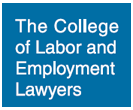Discrimination may occur in many different forms and in various ways. You might have a “gut feeling” that you were discriminated against. But how can you tell if you have a valid case?
Anti-discrimination laws make it illegal for an employer to take adverse employment action against you if you are a member of a protected class, or category of persons. Not all types of discrimination are protected under the federal anti-discrimination laws. Also, while the federal laws protect you against workplace discrimination, it is often very difficult to prove that discrimination occurred.
There are several questions that you can ask yourself to help determine whether you were discriminated against and whether you will be able to prove that the discrimination occurred.
What is discrimination?
There are several federal laws that protect you from discrimination in the workplace. Each federal law makes it illegal to discriminate against certain categories of people, known as protected classes. Not all types of discrimination are protected under the federal laws. The federal anti-discrimination laws only protect you if you fall into a protected class or category. The protected classes differ under the various federal laws and are summarized below.
Title VII of the Civil Rights Act of 1964 (Title VII) makes it illegal to discriminate against someone on the basis of race, color, religion, national origin, or sex.Title VII also makes it illegal to discriminate against women because of pregnancy, childbirth, or medical conditions related to pregnancy or childbirth.
The Age Discrimination in Employment Act (ADEA) makes it illegal to discriminate against someone because of age. This law protects people who are 40 or older.
The Americans with Disabilities Act (ADA) and the Rehabilitation Act of 1973 make it illegal to discriminate against a person with a disability.
Some state and local laws also make it illegal to discriminate against someone on the basis of gender identity, immigration status, language, family responsibilities, sexual orientation, and/or genetic information. See what categories your state protects against in our Filing a Discrimination Claim page.
What are the different types of discrimination claims that I could bring?
If you believe you have been discriminated against based on your status as a member of a protected class or category, there may be several types of claims that you could bring.
Discriminatory Intent/Treatment
A discriminatory intent or discriminatory treatment claim is when an employee is treated worse by an employer because of his or her status as a member of protected class or category.
Disparate Impact
A disparate impact claim is a type of discrimination based on the effect of an employment policy, rule or practice rather than the intent behind it. The anti-discrimination laws make it illegal for a seemingly neutral policy, rule or practice to have a disproportionately adverse affect on members of a protected class. For example, a strength requirement might screen out disproportionate numbers of female applicants for a job, or requiring all applicants to receive a certain score on a standardized test to be eligible for a promotion could adversely affect candidates of color.
Retaliation
A retaliation claim is when an employer retaliates against an employee who engages in conduct that the law protects, like making a complaint about discrimination, or reporting a safety hazard.See the Retaliation Page for more information about retaliation claims.
What evidence is needed to prove my employer intentionally discriminated against me?
There are two types of evidence that can be used to prove discrimination: direct and circumstantial.
Direct Evidence
Direct evidence is the best way to show that discrimination occurred. Direct evidence of discrimination includes statements by managers or supervisors that directly relate the adverse action taken against you to your protected class status.
For example, if your employer tells you that you are being let go because you are near retirement age and the company wants to go with a younger image, you have direct evidence that your protected class status was the cause of your termination. This evidence can be in the form of verbal comments or statements written in letters, memos, or notes.
Circumstantial Evidence
The likelihood of obtaining direct evidence of discrimination is extremely slim. Supervisors and other company personnel are too sophisticated and too well-trained by their own attorneys to openly express their biases and prejudices. In almost every case, an employee must rely on circumstantial evidence to create a presumption of discrimination.
I don’t have direct evidence against my employer. How do I use circumstantial evidence to show that my employer discriminated against me?
According to the “McDonnell-Douglas Test,” named for a famous Supreme Court decision, an employee must first make out at least a “prima facie case” to raise a presumption of discrimination. To make out a prima facie case of discrimination, an employee must be able to answer “yes” to the following four questions:
- Are you a member of a protected class? For example, if you are claiming age discrimination, are you over 40? If you are claiming disability discrimination, are you disabled?
- Were you qualified for your position? For example, if your job required you to be a licensed technician, were you licensed?
- Did your employer take adverse action against you? Adverse action includes hiring, promotions, termination, compensation and other terms and conditions of employment.
- Were you replaced by a person who is not in your protected class (or, in the case of age discrimination, someone substantially younger than you)? For example, if you are disabled, were you replaced by someone who is not disabled?
If you can show at least these things, the law will presume, since you were qualified for your job and then discharged in favor of someone not in your protected class, that your protected class status was the reason for the adverse action.
The “circumstantial evidence” test is flexible. It has been modified over time to avoid a mechanistic approach to discrimination cases. A person claiming discrimination who does not have direct evidence of discrimination must produce enough circumstantial evidence of discrimination to allow a jury to find that the employer acted discriminatorily. The law recognizes that persons can be discriminated against even if they were not replaced by someone outside of the protected class, for example during a reduction in force.
An employee may have sufficient circumstantial evidence to prove discrimination if they are able to answer “yes” to several of the following questions:
- Were you treated differently than a similarly situated person who is not in your protected class?
- Did managers or supervisors regularly make rude or derogatory comments directed at your protected class status or at all members of your class and related to work? For example, “Women don’t belong on a construction site” or “Older employees are set in their ways and make terrible managers.”
- Are the circumstances of your treatment so unusual, egregious, unjust, or severe as to suggest discrimination?
- Does your employer have a history of showing bias toward persons in your protected class?
- Are there noticeably few employees of your protected class at your workplace?
- Have you noticed that other employees of your protected class seem to be singled out for adverse treatment or are put in dead-end jobs?
- Have you heard other employees in your protected class complain about discrimination, particularly by the supervisor or manager who took the adverse action against you?
- Are there statistics that show favoritism towards or bias against any group?
- Did your employer violate well-established company policy in the way it treated you?
- Did your employer retain less qualified, non-protected employees in the same job?
If you answered, “Yes” to the four questions in the McDonnell-Douglas Test and to several of the questions above, you may be able to establish a presumption that your protected class status caused the adverse employment action.
No single piece of evidence is usually enough to prove discrimination. On the other hand, there is no “magic” amount or type of evidence that you must have to prove discrimination.
What if my employer denies discriminating against me?
Once you establish a presumption of discrimination, consider the reason that your company gave for terminating you.
In court, an employer has the opportunity to offer a legitimate, non-discriminatory reason for its conduct. The law only requires the employer to articulate, or state, a reason for its conduct. It does not have to prove that it is the true reason.
A company can almost always come up with some reason for the action that it took. Once the employer articulates this reason, your presumption of discrimination is gone and you will have to offer additional evidence, as discussed further below.
If the employer cannot offer a legitimate reason for your termination, the presumption remains and you have proven a case of discrimination. However, don’t count on this happening. You may think, “My employer can never come up with a good reason for firing me!” Recall, however, that your employer doesn’t need a “good” reason, just any reason besides your protected status. The vast majority of employers can do this.
What can I do if my employer’s reason is a cover-up for discriminating against me?
Assuming that your employer can offer any explanation at all for terminating your employment, you must next consider whether you can prove that the reason is just a pretext, a cover-up for discrimination. You may be able to prove that the employer’s stated reason is just a cover-up or pretext for discrimination if you can prove any of the following:
- The stated reason is factually untrue
- The stated reason is insufficient to have actually motivated your discharge
- The stated reason is so riddled with errors that your employer could not have legitimately relied upon it
- Your protected status is more likely to have motivated your employer than the stated reason
- Powerful direct or circumstantial evidence of discrimination
In order to successfully challenge your employer’s denial, the law requires you to prove that your employer’s stated reason is false AND that your protected status played a role in your termination.
What evidence do I need if my employer’s seemingly neutral policy, rule or neutral practice had a discriminatory effect?
Proving a disparate impact case is similar to proving a discriminatory intent case. First, you must use circumstantial evidence to create a presumption that the employer’s seemingly neutral policy, rule or practice had a discriminatory effect on a protected class or category. Next, your employer then has the opportunity to show that the policy, rule or practice was a job-related business necessity. If your employer is able to show that the policy, rule or practice was a business necessity, then you can still win if you are able to prove that your employer refuses to adopt an alternative policy, rule or practice with a less discriminatory effect.
What are the remedies if I win my discrimination case?
- Back Pay. Back pay is lost earnings resulting from the discrimination from the date of the discriminatory act to the date of a judgment.
- Front Pay.Front Pay is lost future earnings resulting from the discrimination.
- Lost Benefits. Lost benefits may include health care coverage, dental insurance, pension or 401k plans, stock options, and profit sharing.
- Emotional Distress Damages. Emotional distress damages, which are also called pain and suffering, are mental or emotional injuries as a result of the discrimination.
- Punitive Damages. Punitive damages are intended to punish the employer for particularly egregious conduct.
- Attorneys’ Fees. In addition to the damages you can recover for your injuries, you can also win an award of attorneys fees, expert witness fees, and court costs.
This selection was originally excerpted from Job Rights and Survival Strategies by Paul H. Tobias and Susan Sauter.








